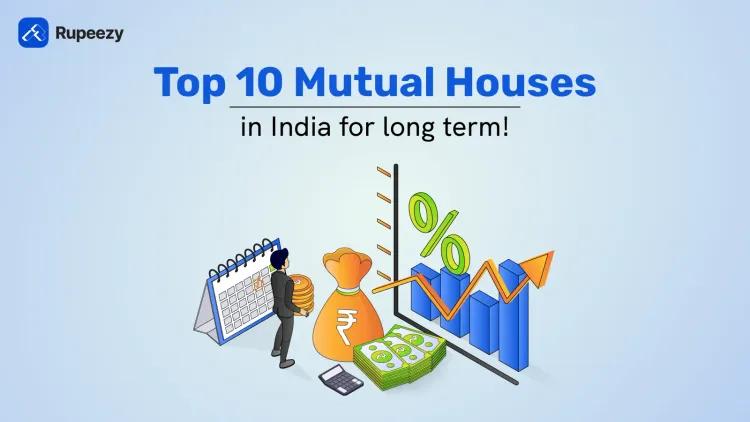Is Mutual Fund Safe in 2025? Latest Insights and Analysis


00:00 / 00:00
“Mutual funds are subject to market risks; please read all scheme-related documents carefully before investing." This is a common phase which we have heard at the end of every mutual fund advertisement, but have you ever considered what those risks are? And, if there are risks, how safe are mutual funds actually? Despite this caution, millions of people invest in mutual funds annually.
People choose mutual funds because they provide diversification, professional management, and flexibility. They are accessible to all types of investors and can be tailored to different risk tolerances and financial objectives. So, what exactly is a mutual fund? And is it safe to invest?
In this article, we will learn about mutual funds, is mutual fund safe and the risks associated with them. We will also look at various strategies for investors to invest wisely while minimising risk, as well as whether they are truly safe investments.
What are Mutual Funds?
Mutual funds are financial instruments that combine the capital of several participants to buy a variety of securities. Stocks, bonds, and other financial assets are examples of them. Professional fund managers oversee mutual funds, making investing decisions on behalf of investors and allocating funds in an effort to maximize capital gains returns.
Mutual funds have become more and more popular among a wide range of investors. This is due to the following advantages they provide:
Diversification: It refers to the process of investing funds in various asset classes. If one selection in the portfolio fails, the loss will be offset by profits from other investments. The concentration risk will be reduced significantly by this procedure.
Liquidity: Investors in mutual funds have the freedom to liquidate their money at any time by selling their units, subject to certain deductions depending on the AMCs.
Professional Management: Qualified fund managers manage mutual funds and offer a variety of investment options to small participants. Mutual funds reduce the risk of investing by efficiently managing their portfolios.
Diversity: The fact that there are various mutual fund products that are accessible is another significant element in their appeal. From minimal-risk mutual funds that offer more consistent growth to high-risk ones that suit your needs, regardless of your investing objectives or risk tolerance.
Well-regulated: Mutual funds are well-regulated by the Securities and Exchange Board of India (SEBI), which ensures operational transparency, safety, and fairness.
Low entry cost: Mutual funds offer a minimum investment option, making them accessible to small investors.
Are Mutual Funds Safe?
We now understand why mutual funds are a popular investment choice due to the numerous benefits they provide for long-term growth. Now, the question remains: are mutual funds safe or not? To answer this question. Let's define "safety" in mutual funds.
In investing, safety refers to how well your capital is preserved and the predictability of returns. Unlike other investment options such as FDs or savings accounts, mutual fund returns are not guaranteed; their value can fluctuate depending on the performance of the underlying assets, which can be equities, bonds, or a combination of both. As a result, whether a mutual fund is safe to invest or not depends on several factors, such as fund type, market volatility, time horizon, and investor behaviour. However, the SEBI regulates the mutual fund industry and ensures that investments are not misused.
Types of Risks in Mutual Funds
After understanding “is mutual fund safe”, it’s equally important to explore the risks that come along with investing in them.
1. Market Risk
It refers to the type of mutual fund risk in which losses occur as a result of poor market conditions. Systematic risk is another term for it, indicating that risk cannot be eliminated by diversification. Natural disasters, recessions, inflation, political conflicts, and fluctuating interest rates are all factors that influence the market.
2. Liquidity Risk
This risk involves an investor who may suffer losses if they are unable to sell their investment when necessary. This is due to low market demand or restrictions on lock-in periods. Like ELSS mutual funds, there is a three-year lock-in period during which you cannot redeem your money.
3. Credit Risk
Credit risk occurs when the scheme issuer fails to pay the promised interest to investors. Let’s take debt funds as an example. Fund managers can undertake certain risks, like including low-credit-rating securities with investment-grade securities to increase the rate of return of the fund. If the issuer of a debt security is unable to pay interest or principal as promised, then it can increase the credit risk.
4. Concentration Risk
This risk occurs when an investor invests too much of their money in a single investment scheme or sector. If that investment performs well, the investor will earn good returns; if it does not perform well, the investor may lose the entire amount invested. The best way is to diversify your investments.
5. Interest Rate Risk
The risk arises when interest rates fluctuate, particularly for debt mutual funds that invest in securities such as bonds. Let’s say that if interest rates rise, the bond prices fall, as it works inversely. The new bonds offer high returns, making older bonds with lower returns less appealing, resulting in a drop in their prices. However, fund managers actively manage funds based on their strategy to maximise returns.
6. Inflation Risk
It is the risk of diminishing purchasing power as a result of a rising inflation rate. This occurs when the returns on your investment are insufficient to cover the rising cost of goods and services. As a result, if an investment increases in value, the rate of return should be higher than the inflation rate to afford more in the future.
7. Currency Risk
This risk arises when the exchange rate decreases; it impacts the value of foreign investments made through mutual funds. When a foreign currency appreciates, it will result in a domestic currency depreciation, and that can lower the rate of return when exchanged to domestic currency.
How to Manage Risk
Now that we've covered the risks associated with mutual funds, let's look at how you can manage or mitigate risks by considering some of the following points.
1. Build a portfolio reflecting your risk tolerance level
Risk tolerance varies from person to person. Some people can withstand ups and downs in their investment, while others want safety. Choosing the right mutual fund depends on key factors like your age, income level, financial goals, and risk tolerance.
2. Invest using SIPs (Systematic Investment Plans)
You can start your investment with a few hundred or thousands in SIP every month rather than investing a large amount all at once. You can start investing with a minimal amount and purchase more units when the prices are low during market corrections.
3. Diversifying your portfolio
Rather than investing all of your money in one fund or sector, you can divide it among various types, such as equity, debt, or sectoral basis. In this way, even if one component underperforms, the other investments can support your overall investment. Diversification helps in balancing your overall risk and lowers the probability of significant losses.
4. Invest in STP (Systematic Transfer Plan)
You can incrementally transfer money between mutual funds using STP, usually from low-risk debt to high-risk equity funds. If you have a lump sum amount but do not want to invest it entirely in equity, this can be beneficial because it ensures a smooth transfer of cash over time from debt to equity fund. This reduces the risk of entering the market at the wrong time and ensures capital protection.
Assessing Mutual Fund Safety
Before investing in mutual funds, you should know whether they are safe or not. We can ascertain it by evaluating the risk and returns of mutual funds by comparing them with market benchmarks. The following are important metrics for evaluating the safety of mutual funds:
1. Alpha
In comparison to a benchmark index, it describes how successfully a fund manager has managed a fund. It reflects the value added by the fund manager’s decisions, indicating whether the fund outperformed the market due to their strategy. An alpha of 1.0 indicates that a fund surpasses its benchmark index by 1%. Consequently, a 1% underperformance would be indicated by an alpha of -1.0. A larger positive alpha is preferable for investors.
2. Beta
A measure of a mutual fund's sensitivity to its benchmark is called beta. It is a statistical indicator of volatility that uses standard deviation to quantify both systematic and unsystematic risk. The beta 1.0 indicates that, fund moves in line with the benchmark. The fund will be less volatile than the benchmark if its beta is less than 1.0. If the beta value is greater than 1.0, the fund fluctuates more than the benchmark. For instance, a fund portfolio is supposedly 20% more volatile than the market if its beta is 1.2.
3. R-Squared
It is an indicator of how closely a mutual fund's performance tracks a benchmark index, such as the S&P 500 for stock funds or U.S. Treasury Bills for bond funds. R-squared indicates how much of a mutual fund’s return variation can be attributed to fluctuations in the market or its benchmark index.
R-squared values fall between 0 and 100. Scores below 40 indicate low correlation with the index, scores between 40 and 70 indicate average correlation, and scores between 70 and 100 indicate excellent correlation.
It can be a warning sign for actively managed funds if the R-squared is extremely high. It may suggest that the fund is closely tracking the index even though it is charging higher fees. An inexpensive index fund might be a better choice in certain circumstances.
4. Standard Deviation
The standard deviation quantifies how far the data deviates from the mean. The more spread out the returns are, the more they differ from the average. The standard deviation is used in the financial industry to quantify the volatility (risk) of an investment by calculating its yearly rate of return. A volatile stock would have a large standard deviation.
For mutual funds, a high standard deviation means the fund’s returns have swung widely in the past, while a low standard deviation means the returns have been more stable and consistent.
5. Sharpe Ratio
Investors can determine if an investment's returns are the consequence of prudent investing choices or excessive risk by looking at the Sharpe ratio. This metric is helpful because, even though a security or portfolio may yield better returns than its peers, it is only a wise investment if those higher returns do not include an excessive amount of additional risk. An investment's risk-adjusted return is improved by a higher Sharpe ratio.
How SEBI protects Investors
SEBI plays an important role in protecting investors' interests in the mutual fund industry through the following measures:
Educate Investors through its awareness program
The Investor Education and Protection Fund (IEPF) was created by the Central Government (GOI) to safeguard the rights of securities investors, encourage the growth and regulation of the securities market, and address issues related to or incidental to it. Workshops are held by SEBI to raise awareness and educate people about investments, answer investors' queries and publish caution through media.
Disclosure based Guidelines
This allows investors to make well-informed judgements by disclosing information about the market, the product, and the issuers, intermediaries, etc. SEBI has developed guidelines to keep an eye on the disclosures.
Redressal of Investor Grievances
If investors have complaints against companies or intermediaries, they should first approach them directly. If the issue is unresolved or the response is unsatisfactory, investors can contact SEBI, which follows up with the concerned parties. SEBI also offers a toll-free helpline (1800 266 7575 or 1800 22 7575) in 8 regional languages for investor support.
SCORES (SEBI Complaints Redress System)
SCORES is SEBI’s online platform that allows investors to file complaints and track their status 24/7. Each complaint gets a unique number and is forwarded to the concerned entity. An Action Taken Report is uploaded and monitored by SEBI. The system keeps a record of all complaints for audits and helps SEBI make policy decisions. A mobile app is also available for easy access.
Mutual Fund is Safe or Not? Lessons From The Past
The 2008 financial crisis was a turning point for mutual fund investors in India. Before the crash, the Indian stock market was booming, driven by optimism in sectors like infrastructure and banking. Asset Management Companies (AMCs) capitalized on this euphoria by launching New Fund Offers (NFOs), especially thematic funds focused on Infrastructure, BFSI (Banking, Financial Services & Insurance), and International markets.
These thematic funds were heavily marketed with promises of high double-digit returns, sometimes claiming 25% or more. Investors, especially beginners, were drawn in by the narrative of rapid economic growth and global opportunities. AMCs played a key role in building this hype, encouraging people to believe that these funds were a sure path to wealth.
However, when the 2008 crisis hit, these same thematic funds turned into some of the biggest losers. Their narrow focus made them highly vulnerable to market shocks. The crash served as a harsh lesson that chasing trends without understanding the risks can lead to major losses. It reminded investors of the importance of diversification and aligning investments with long-term goals.
What 2008 Taught Mutual Fund Investors. Here are the key lessons learnt from the 2008 financial crisis:
Diversification: Don’t invest all your money in one stock or sector. Spread it across various types of mutual funds to reduce risk, like keeping fruits in different baskets so you don’t lose all if one falls.
Risk Assessment: Know your risk tolerance. Some investments are fast and risky, while others are slow and steady. Choose a mix that suits your comfort level and goals.
Long-Term Horizon: Investing is like planting a tree. It takes time to grow. Don’t worry about short-term market ups and downs. Staying invested for the long term usually gives better results than trying to guess the right time to invest.
Conclusion
In conclusion, we understood that mutual funds are not risk-free, they can be a safer investment option if chosen wisely and held for an extended period. Diversity, skilled management, and SEBI regulatory oversight provide investors a level of security. The keys to safety include choosing the right type of fund, being aware of your level of risk tolerance, and continuing to invest with discipline. Therefore, mutual funds are secure, but only if you invest cautiously.
FAQs
Q. Can we lose invested money in a mutual fund?
Yes, investing money in a mutual fund can lose value due to market fluctuations, poor management, or economic conditions.
Q. Is there a risk in Mutual funds?
Mutual funds are subject to various types of risks, including volatility risk, credit risk, liquidity risk, interest rate risk, inflation risk, concentration risk, currency risk, and rebalancing risk.
Q. Is a mutual fund 100% safe?
No investment is 100% risk-free, even those that are advertised as completely risk-free will have some risk involved. Mutual funds, like any market-linked investments, depend on how the financial markets perform. However, since your investment is spread across multiple companies, your chances of losing money are exceptionally low.
Q. Are mutual funds safe for long-term?
Mutual funds are considered relatively safe for long-term investments due to their diversification and professional management. They pool money from various investors and invest in a diversified portfolio of assets such as stocks, bonds, and other securities, which helps to spread risk.
Q. Which mutual fund is safe to invest?
In India, debt funds invest in fixed-income options like bonds and government securities. They come with lower volatility and more stable but moderate returns, making them a safer option for retail investors.
Check Out These Related Articles |
The content on this blog is for educational purposes only and should not be considered investment advice. While we strive for accuracy, some information may contain errors or delays in updates.
Mentions of stocks or investment products are solely for informational purposes and do not constitute recommendations. Investors should conduct their own research before making any decisions.
Investing in financial markets are subject to market risks, and past performance does not guarantee future results. It is advisable to consult a qualified financial professional, review official documents, and verify information independently before making investment decisions.

All Category









